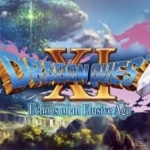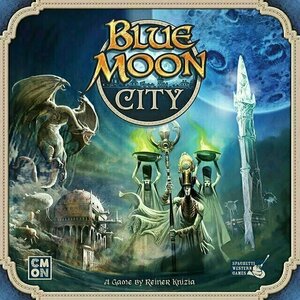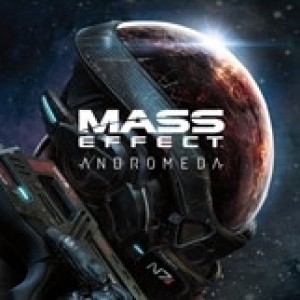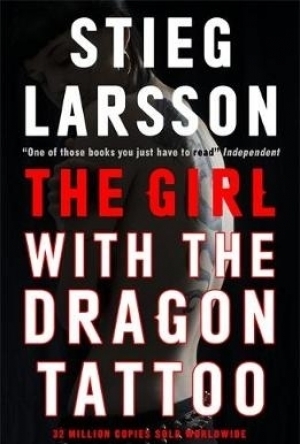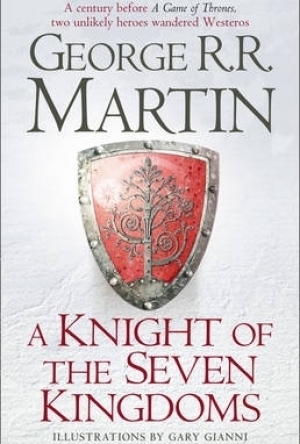
A Knight of the Seven Kingdoms: Being the Adventures of Ser Duncan the Tall, and His Squire, Egg
George R.R. Martin and Gary Gianni
Book
A century before A GAME OF THRONES, two unlikely heroes wandered Westeros...A KNIGHT OF THE SEVEN...
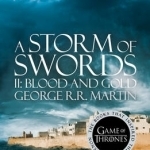
A Storm of Swords: Part 2 Blood and Gold
Book
HBO's hit series A GAME OF THRONES is based on George R R Martin's internationally bestselling...
Mothergamer (1607 KP) rated Dragon Quest XI: Echoes of an Elusive Age in Video Games
Apr 3, 2019
Once the initial introduction is done, this is where Dragon Quest really gets going. You have a few side quests that give you a tutorial on how the battle system works and there is a small bit of exploration in the hero's home village.
The hero exploring a cave in his village.
Exploration is very much encouraged in Dragon Quest without being overwhelming. Dungeons are fairly linear so there's no confusion about where to go. The battle system has been revamped a bit with the ability to have the AI on your party members set to specific things such as focusing on healing or fighting wisely. The way I had mine set up was that I had control of the hero with the follow orders setting and had the party members set to certain AI controls like having designated healers and melee fighters.
Another part of fighting in these turn based battles is something called pep powers. Basically after party members take a certain amount of damage from enemies they gain the power of pep. Each pep power is different and you unlock more for your hero and party members as you level up. These pep powers allow the hero and his friends to team up during battles to unleash epic attacks or heal everyone depending on what the situation calls for. Pep powers do not last forever however and if you don't use them right away they can wear off. A trick around this is to have the party member who is pepped up swap places with a party member who isn't. This is where the tactics and line up option in the battle menu comes in handy. It allows you to swap members in and out as needed until everyone has their pep powers ready to go.
Use the pep powers to defeat enemies in battle.
There are tons of side quests in Dragon Quest where you help villagers find items, defeat monsters for them, or just wear the right outfit and you get rewarded with not just experience but items for crafting, healing items, or gear for your party members. There are also some mini games like horse racing and a casino where you can exchange tokens for things like costumes and crafting recipes.
Horse racing is just one of the mini games you can play in the game.
Crafting is a big part of Dragon Quest XI. When you are at campfires, you can use the fun sized forge to craft weapons, armor, and accessories for your hero and his friends. I enjoyed this part of the game a lot because there are a variety of items you can make and if you make them well you get some pretty good stats on them. As you level up, you unlock abilities that can enhance your forging skills and increase your chances of successfully crafting items. If you screw up a crafting session you can always go back and rework the item if you have the right number of perfectionist's pearls. Some of the side quests require you to craft specific items so this is where the fun sized forge comes in handy. It's a nice break from level grinding and adventuring and you can save your game progress at the campfire as well.
Craft a variety of items with the fun sized forge.
Another fun aspect of the game is the variety of costumes you can get for your hero and party members. Some do offer pretty great defense stats and some are just for fun like Jade's bunny costume. There are a few side quests that offer costumes as rewards and some of the costumes you can craft with the forge. Running around getting all the costumes is a lot of fun and each one looks great and goes well with the party member it's for.
Just one of the many costumes you can get in the game.
Does Dragon Quest XI have flaws? In a word, yes. While I loved running around exploring everywhere, enjoyed the story, and didn't mind the level grinding there are serious issues with many of the boss battles in the game. My biggest one is that the old fashioned way of not being able to see a boss battle's HP bar does not work. There are times where a battle will drag on a little too long and there is no way to tell if you are even doing any damage at all or if the boss is close to being defeated. Fighting and hoping for the best just does not work.
Another factor is just how much level grinding is needed in order to win against certain bosses. I love Dragon Quest and while I don't mind challenging having to run around for long periods of time to level grind just to win a boss fight is incredibly tedious which brings me to the next major issue with the game. Towards the end of the game there is a final boss that is the biggest pain in the ass to fight. To add to the frustration in this final area there is only one save point and it's at the beginning of the dungeon. There is no warning about the final boss coming up, no save point before it, and it just throws you into the fray. I did not win the first time or even the second because the boss fight was in two parts and the second part had an outrageous difficulty spike to the point of being so frustrating that I had to take a break from the game.
I did finish the game eventually, but that part of the game alone and the odd spikes in difficulty in various boss fights shows that Dragon Quest needs to modernize a bit and get with the times. It does not need to do anything drastic, but it at least needs to make some changes that are more friendly to the people playing their game such as showing an enemy's HP gauge and not have such a steep learning curve for important boss battles.
Other than those things, I enjoyed Dragon Quest XI a lot. It has an interesting story, wonderful characters, and is a great adventure overall. There is a lot to see and do, the mini games are fun, and the voice acting in the game is very well done. The artwork in the game is terrific and you definitely notice Akira Toriyama's unique art style. The music for the game is great also. When you finish the game, there are things you can do afterwards such as collecting all the crafting recipes and finishing some level 60 side quests. If you are a fan of the series, it is one that you will enjoy playing because it is a great addition to the Dragon Quest universe.
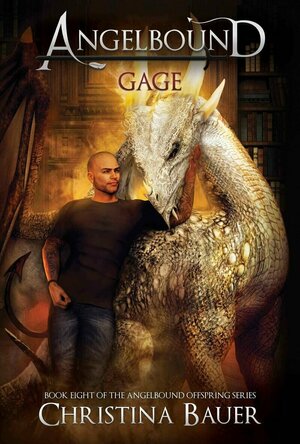
Gage (Angelbound Offspring #8) by Christina Bauer
Book
Gage runs the L’Griffe, AKA the dragon shifter mafia on Earth. Since the human realm has no...
Young Adult Fantasy Series
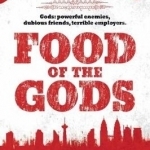
Food of the Gods: A Rupert Wong Novel
Book
It's not unusual to work two jobs in this day and age, but sorcerer and former triad soldier Rupert...
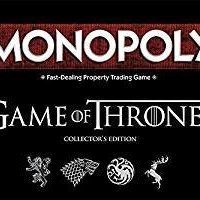
Monopoly: Game of Thrones
Tabletop Game
The race for control of Westeros is on with this brand new special Monopoly game. With artwork from...
Purple Phoenix Games (2266 KP) rated Blue Moon City in Tabletop Games
Aug 27, 2021
Blue Moon City is a fantasy-set, hand management, set collection, city rebuilding game for two to four players. In it players are attempting to help reconstruct the war-ravaged Blue Moon City to its former glory by utilizing its citizens at crucial construction sites in order to earn crystals. It sounds weird, and it is, but read further to understand why. Oh and there are dragons that act like supervisors or teachers when they come stand by you to watch you take a test and judge you from behind the whole time.
To setup, place the Courtyard tile in the middle of the table and build the city in a 5×5 grid minus the corner tiles. Each player chooses their color and takes the mini and discs of that color. Place the dragons nearby, along with the Obelisk token, draw deck of cards, crystal chits, and dragon scale chits. Deal each player a hand of eight cards and the game may begin!
Blue Moon City is played over a series of turns, and each turn is divided into four phases: Movement, Contribution, Reset, Pass Turn. During the optional Movement phase, a player may move their pawn one to two orthagonal spaces (N/E/S/W) or use cards from their hand for their special movement powers for player pawn AND/OR dragon movement.
Next, a player may discard cards from their hand to contribute to the reconstruction of a building during this optional Contribution phase. By discarding a number of cards whose values equal or exceed the printed value on the matching-colored building tile a player will be able to place a disc upon the tile. Once the tile’s contribution spaces have been filled with discs it can be scored. To score a building tile, determine majority presence on the tile and award the Majority Bonus to that player. Any disc presence in minority will receive the Construction Bonus, including the majority winner. If a player had contributed on a tile that also was hosting a dragon mini, that player would earn a dragon scale from said dragon supervisor. Players may also make their way back to the Courtyard tile in order to donate crystals to the Obelisk. Doing so will allow the player to place one of their discs on the Obelisk itself, and the game ends when a player has placed the proper number of discs upon the Obelisk per the number of players.
When the pile of dragon scale tokens has been exhausted, players will check who currently holds the majority of scales. They will be awarded with six crystals, and any player holding three or more will receive three crystals. Turn all the dragon scales back into the supply to be earned again.
During the Reset phase a player may discard any number of cards from their hand and draw back as many cards plus two. So if a player discards zero cards from hand they would still draw two from the deck. Discarded four cards? Well redraw six.
Finally the active player will Pass Turn to the player on their left, who will complete their turn of the same four phases.
Play continues in this fashion until one player has placed the target number of discs on the Obelisk token to claim victory and dragon approval!
Components. Okay, this is a tough one because overall I love the components in the game. The dragons and player pawns are cool minis (from CMON that just makes sense). The Obelisk token is huge and I love how it looks. The art overall is really creepy, but well done, and enjoyable to behold. The player discs, though poo-pooed by other more-renowned reviewers, I find to be just fine. They are a smooth plastic in the player color and I have no problems with their quality. But speaking of colors… I agree with others that have stated the colors of some cards (or suits, if you prefer) should have been made a different color. What I mean is that the game is very greige-heavy throughout. The card suits (except the red, yellow, and blue) are a variation of the same greige that makes eyes strain to determine exactly which color they are holding. I understand that a certain aesthetic was targeted, and they certainly achieved that, but these colors do make it more difficult to play, especially for us that are starting to over-ripen with age.
Those component gripes aside, this is an incredible game. The color choices aside, I love everything about it! The movement from tile to tile, and trying to align movement with the cards in hand and keeping some back so that you can use them to move the dragon to your spot as well is just fun mental exercise. Each value 1 and 2 card has a special ability, be it movement bonuses, changing other cards’ colors, or just being straight up wild cards, and having to choose to use the cards as either the special power or for contribution values creates tons of crunchy gamer choices. Not super-crunchy. Turns won’t be mentally debated for 10 minutes, but deciding how best to use the hand of cards you hold is great.
I also very much enjoy the theme of the game, even though I was hoodwinked by the title (not really, just trying to tie it all back). I love fantasy worlds and having a unique theme is a definite plus for me. I haven’t yet thrown in the expansion tiles, but I will the next time I play. If you need a relatively quick-playing jaunt through a ravaged city, I recommend you check out Blue Moon City. Purple Phoenix Games give it a 10 / 12. It has nothing to do with beer, which would be another great theme idea – drunken dragons – but I will be holding onto this one for quite a while.
TacomaSquall (3 KP) rated Mass Effect: Andromeda in Video Games
Aug 11, 2018
I was fortunate to avoid most of the initial bugs in the animation, but was disappointed in the limited exploration available. While I liked the Angara, they couldn't get me to care about them as much as the original games caused me to care about the Quarians and Krogan.
I was tickled by the interactions between the members of the cast, which were dynamic and as detailed as the crew of the Normandy's had been. In the end, it was the team supporting the Pathfinder that sold me on the game, and kept me going to the madcap pell-mell race to the ending.
Yes, it was rushed. Yes, it felt incomplete. But a mediocre installment in the Mass Effect universe still is better than the majority of RPGs out there.
Acanthea Grimscythe (300 KP) rated The Girl with the Dragon Tattoo in Books
May 16, 2018
The Girl with the Dragon Tattoo is an utterly enthralling crime thriller, centered around Mikael Blomkvist, a journalist convicted of libel, Lisbeth Salander, a ward of the government with a penchant for hacking, and the age-old mystery of what happened to Harriet Vanger: a daughter of the prominent Vanger family that went missing in 1966 and is presumed to have been murdered. Filled to the brim with corporate corruption, misogynistic views, and sharp twists that could not be done justice by the films, Larsson has undoubtedly woven a masterpiece - one that I was unable to put down until the last page was read. I mean that quite literally, as I didn't go to bed until after five this morning.
It's not very often that a book snares me so strongly that I cannot stop myself from turning its pages, and the way in which this one sunk its claws into me has not happened in a very, very long time. The plot is complicated and filled with dead ends, but every single bit of information is also vital to the progression of the story. At first read, that might sound a bit contradictory, and in a way it truly is. When Blomkvist is hired by the aging Henrik Vanger to look into Harriet's disappearance, he is given a cold case with no open leads. Each and every time he finds something promising, it fails to work out. In many cases, this is not an easy style to pull off. Other books that have created this sense of hopelessness have largely succeeded in boring me half to death, and in some cases I've dropped them.
When it comes to the characters in a book, the way in which they are written can easily make or break the story. Extreme distaste, in some cases, can lead to difficulty in finishing a book for some readers, while others loath the so-called "Mary Sue" character. In The Girl with the Dragon Tattoo, Larsson's characters are part of relationships that are largely unconventional, especially to the mind of a girl raised in the conservative Southern United States and. The interaction that results from these relationships help to drive the story forward by not only introducing the reader to a wide range of characters, but by also providing those characters, some of which are deeply flawed, with an impressive amount of depth.
While some of the content is, without a doubt, sensitive material for some readers, Larsson also uses The Girl with the Dragon Tattoo as an opportunity to highlight statistics on sexual assault in Sweden, and for that I must give him props. Even in America, there is a lack of seriousness when it comes to allegations of rape and, more recently, things tend to get brushed under the rug, for lack of a better term, if the perpetrator of the crime has any reputation that could be deemed worthwhile. It is a disgusting, dehumanizing way of treating a very real issue, and Larsson hones in on this while simultaneously creating a very strong, independent heroine that readers like myself can relate to, sometimes unfortunately so.
The next book is definitely on my to-read list, but I don't know when I'll get around to it. Hopefully, I'll be fortunate enough to cross it on one of my thrift-shopping trips. It was most definitely worth my sleepless night.

Capture (Torsere #1)
Book
Thrown together, forced to fake a relationship both their lives depend on… To be a dragon rider...
MM Fantasy Romance
